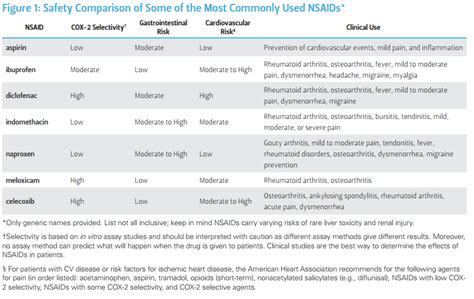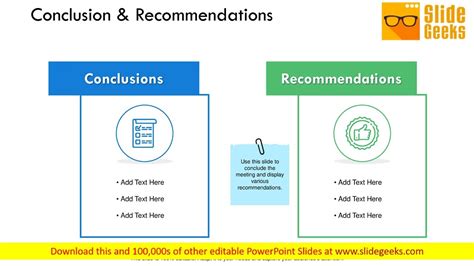Intro
Discover how Celecoxib 100mg works through anti-inflammatory, pain relief, and analgesic effects, targeting COX-2 enzymes to reduce arthritis symptoms, inflammation, and joint pain, promoting overall well-being.
Celecoxib, a nonsteroidal anti-inflammatory drug (NSAID), has been widely used for its efficacy in treating various inflammatory conditions. The 100mg dosage of celecoxib is particularly notable for its balanced therapeutic effect and relatively low risk of adverse reactions. Understanding how celecoxib 100mg works can provide valuable insights into its benefits and applications.
The mechanism of action of celecoxib involves the selective inhibition of cyclooxygenase-2 (COX-2), an enzyme responsible for the production of prostaglandins, which are key mediators of inflammation and pain. By specifically targeting COX-2, celecoxib reduces the synthesis of prostaglandins, thereby decreasing inflammation and alleviating pain without affecting the protective lining of the stomach as much as non-selective NSAIDs do.
This selective inhibition is crucial for minimizing gastrointestinal side effects, which are commonly associated with traditional NSAIDs. The selective nature of celecoxib makes it an attractive option for patients who are at high risk of gastrointestinal complications or those who cannot tolerate the side effects of non-selective NSAIDs. Moreover, celecoxib's efficacy in reducing inflammation makes it beneficial for conditions characterized by excessive inflammatory responses.
Introduction to Celecoxib 100mg

Celecoxib 100mg is often prescribed for the management of osteoarthritis, rheumatoid arthritis, and ankylosing spondylitis, among other inflammatory conditions. Its effectiveness in these conditions stems from its ability to reduce joint pain and inflammation, thus improving functional ability and quality of life for patients. The dosage of 100mg is typically administered once or twice daily, depending on the specific condition being treated and the patient's response to the medication.
Benefits of Celecoxib 100mg
The benefits of celecoxib 100mg are multifaceted, including its efficacy, safety profile, and convenience. Patients often appreciate the once-daily dosing regimen, which can enhance compliance and make managing chronic conditions less burdensome. Furthermore, the selective inhibition of COX-2 reduces the risk of gastrointestinal ulcers and bleeding, which are significant concerns with the long-term use of non-selective NSAIDs.Mechanism of Action

The mechanism of action of celecoxib 100mg involves several key steps that ultimately lead to the reduction of inflammation and pain. Firstly, celecoxib selectively binds to the COX-2 enzyme, blocking its activity. This selective inhibition is crucial because COX-2 is primarily involved in the production of prostaglandins at sites of inflammation, whereas COX-1 is responsible for the production of prostaglandins that protect the stomach lining. By sparing COX-1, celecoxib minimizes the risk of gastrointestinal side effects.
Pharmacokinetics of Celecoxib 100mg
Understanding the pharmacokinetics of celecoxib 100mg, including its absorption, distribution, metabolism, and excretion, provides insights into how it achieves its therapeutic effects and how it might interact with other medications. Celecoxib is well absorbed orally, with peak plasma concentrations reached within 3 hours of administration. It is highly bound to plasma proteins, which limits its volume of distribution. The drug is metabolized primarily by the liver enzyme CYP2C9 and is excreted mainly through the kidneys.Applications of Celecoxib 100mg

Celecoxib 100mg has a range of applications, primarily in the management of inflammatory conditions. For osteoarthritis, it helps reduce pain, stiffness, and inflammation in the joints, improving patients' ability to perform daily activities. In rheumatoid arthritis, celecoxib can slow down disease progression by reducing joint inflammation and damage. Additionally, it is used for the treatment of ankylosing spondylitis, a chronic inflammatory disease of the spine and other joints.
Side Effects and Precautions
While celecoxib 100mg is generally well-tolerated, it can cause side effects, including gastrointestinal upset, headache, and dizziness. Serious but rare side effects include an increased risk of heart attack and stroke, particularly with long-term use. Therefore, it is essential to use the lowest effective dose for the shortest duration necessary. Patients with a history of cardiovascular disease, hypertension, or kidney disease should be closely monitored while taking celecoxib.Comparison with Other NSAIDs

Celecoxib 100mg offers several advantages over traditional NSAIDs, primarily due to its selective inhibition of COX-2, which reduces gastrointestinal risks. However, it is not devoid of cardiovascular risks, and its use must be carefully considered, especially in patients with pre-existing cardiovascular conditions. In comparison to other COX-2 inhibitors, celecoxib has a favorable safety profile and efficacy, making it a preferred choice for many patients requiring long-term anti-inflammatory therapy.
Future Perspectives
The future of celecoxib 100mg and other COX-2 inhibitors looks promising, with ongoing research aimed at improving their safety and efficacy profiles. The development of new formulations and the exploration of their potential in treating other conditions, such as certain types of cancer, are areas of active investigation. Additionally, the study of genetic variations that affect the metabolism of celecoxib and its response in different populations may lead to more personalized treatment approaches.Conclusion and Recommendations

In summary, celecoxib 100mg is a valuable therapeutic option for the management of inflammatory conditions, offering a balance of efficacy and safety. Its selective inhibition of COX-2 reduces the risk of gastrointestinal side effects, making it particularly suitable for long-term use. However, patients should be aware of the potential cardiovascular risks and adhere to the recommended dosage and duration of treatment. Healthcare providers should closely monitor patients, especially those with cardiovascular disease, and consider alternative treatments when necessary.
Final Thoughts
The use of celecoxib 100mg should be part of a comprehensive treatment plan that includes lifestyle modifications and, when possible, non-pharmacological interventions to manage pain and inflammation. Patients and healthcare providers must work together to weigh the benefits and risks of celecoxib and other medications, ensuring that treatment decisions are informed and tailored to the individual's needs.What is the primary mechanism of action of celecoxib 100mg?
+Celecoxib 100mg works by selectively inhibiting the cyclooxygenase-2 (COX-2) enzyme, reducing the production of prostaglandins and thereby decreasing inflammation and pain.
What are the common applications of celecoxib 100mg?
+Celecoxib 100mg is commonly used for the management of osteoarthritis, rheumatoid arthritis, and ankylosing spondylitis, among other inflammatory conditions.
What are the potential side effects of celecoxib 100mg?
+Potential side effects include gastrointestinal upset, headache, and dizziness, as well as serious but rare risks such as increased chance of heart attack and stroke, particularly with long-term use.
We invite readers to share their experiences or ask questions about celecoxib 100mg in the comments below. This open dialogue can help foster a better understanding of how this medication can be used effectively and safely. Additionally, sharing this article with others who might benefit from the information can contribute to raising awareness about the management of inflammatory conditions and the role of celecoxib 100mg in treatment plans.
